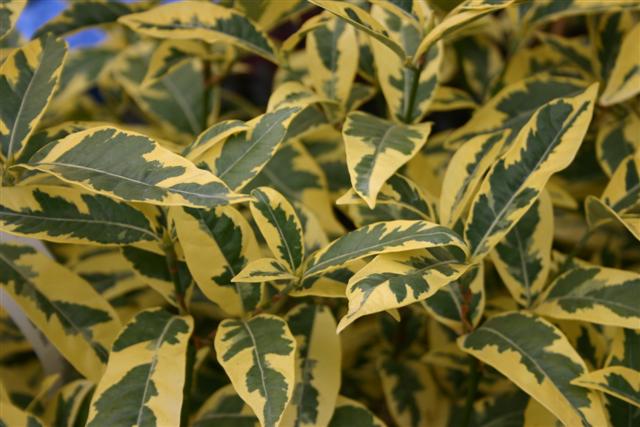Georgia Gardener Newsletter Design Tip: March 20, 2008
| Variegated Plants for Shade |
Variegated Gardenia
Sensational Shade
Working in the sun has always brought me many challenges. My fair skin makes it a requirement that I wear long pants, long sleeves,
a wide hat, sunglasses and thick goopy sunblock even when it's 90 miserable degrees outside. Because of this, I tend to
gravitate towards my shade gardens. (Only mad dogs and Englishmen go out in the noonday sun - Indian Proverb). Shade has its
benefits but also its curses. Very few flowering plants will bloom well or for long periods in shade (even fewer in dry shade). Foliage should really
be the focus of plants for shade.
In the shade, the subtleties of color are easier to see. In bright sunlight, softer and cooler colors tend to become washed out.
And as many gardeners know, flowers are fleeting, foliage is forever (or at least until fall) so try to focus on foliage which will
last the entire season or throughout the year in the case of evergreens.
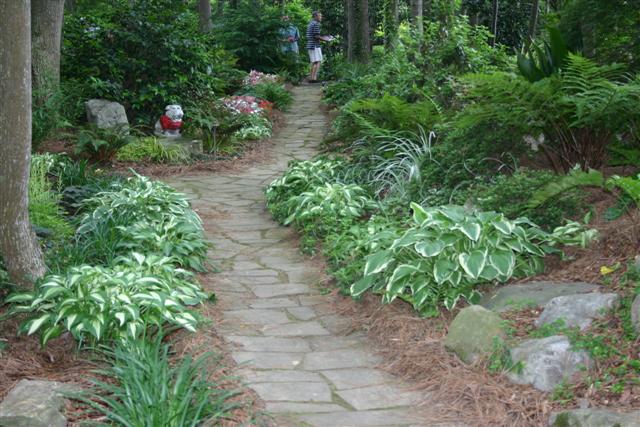
Variegated hostas brighten this woodland path.
Viva la Variegation
Variegation is defined as having different colors on the same leaf, flower, stem, etc. Variegated foliage usually involves
different shades of green together or green mixed with white, cream, silver, pink, etc.
These variegated areas can be blotches, stripes, or involve the edges, veins or centers of the leaves.
Variegated plants, especially those variegated with white,
cream or silver seem to cast a light of their own and thus brighten dark garden areas.
Take note: The non-green variegated areas on
the leaves do not usually have chlorophyll and therefore do not photosynthesize. These leaves or the entire plant may be
slightly weaker than another non-variegated plant which is photosynthesizing at full capacity.
Variegated plants are not commonly found in nature. This does not mean, however, that some plants cannot develop variegated
parts as an adaptation, genetic mutation, or the presence of a pathogen. Whatever the cause, some variegation is attractive
and is therefore selected for by plant breeders while other forms are eliminated.
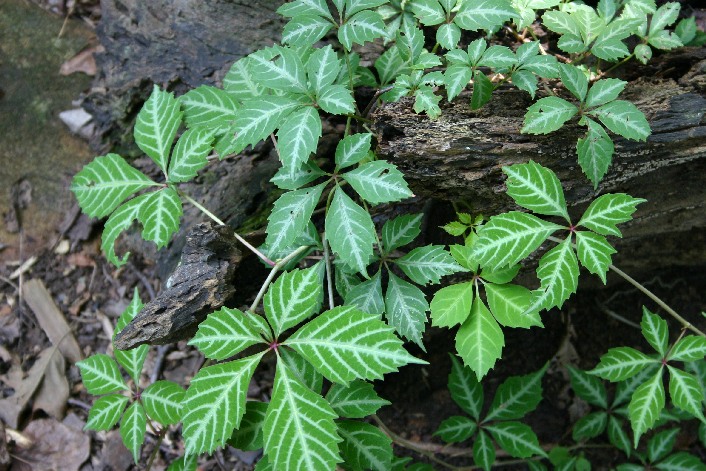
|
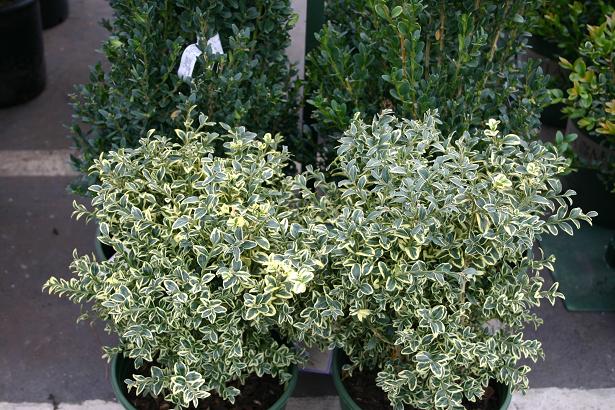
|
| Silvervein Creeper | Variegated Boxwood |
Silvervein Creeper (Parthenocissus henryana) is a cousin to our native Virginia Creeper. As the name implies, the
variegation is located along the veins of the leaves. This deciduous vine grows 15 or more feet a season and turns a
brilliant red/purple when grown in full sun or light shade. It tolerates dense shade also, but will not develop good fall color.
Variegated Boxwood (Buxus sempervirens 'Aureovariegata') is an evergreen shrub that grows well in full sun or partial shade.
It can be grown as a hedge or specimen plant. The variegation on this plant is located around the edges of the leaves.
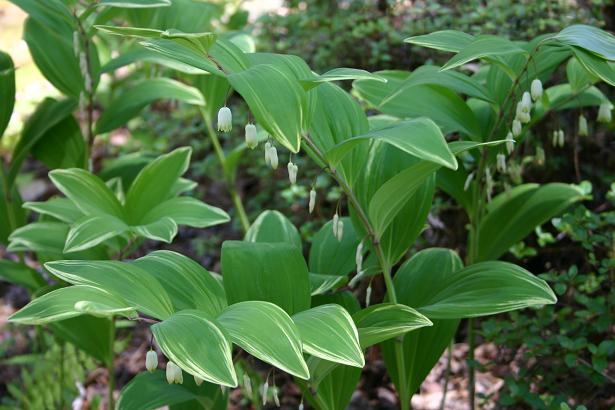
|
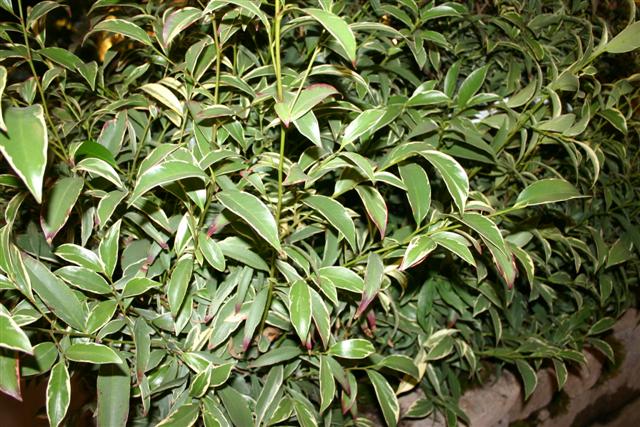
|
| Variegated Solomon's Seal | Variegated Cleyera |
Variegated Solomon's Seal (Polygonatum odoratum 'Variegatum') is a shade-loving perennial where the white variegation is
along the leaf edges and occasionally in the center. This perennial turns an absolutely gorgeous butter yellow in the fall
before going dormant. Variegated Cleyera (Ternstroemia gymnanthera 'Variegata') is a shade-tolerant evergreen shrub with
white/cream variegation along the leaf edges. Occasionally, you may find an entire leaf of white/cream.
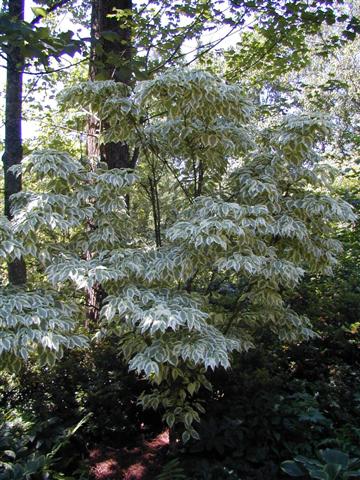
|
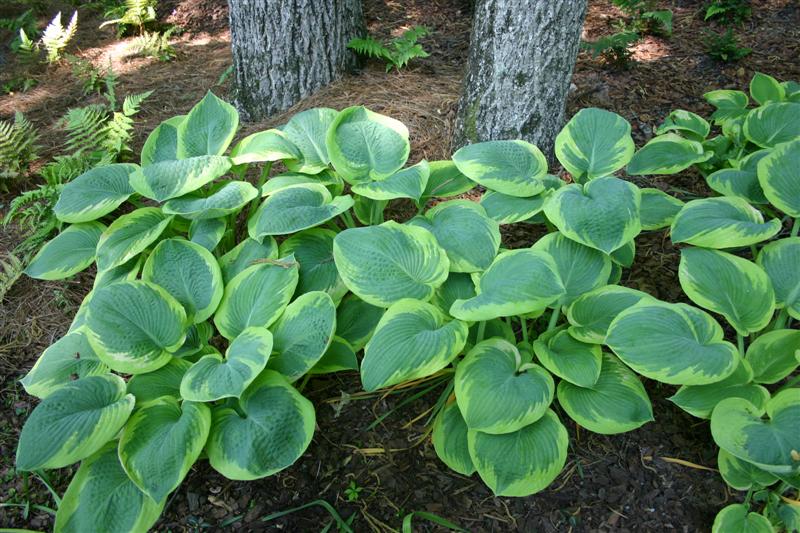
|
| Variegated Dogwood | Frances Williams Hosta |
I happened upon this variegated dogwood in a garden and I cannot remember where. I suspect it is Cornus mas
'Variegata' but I can't be sure. The leaves have white/cream edging. Unfortunately, I didn't see the tree in bloom or
when it had fruit or that would have made it easier to identify. I can tell you that there are quite a few varieties of
variegated dogwoods with new ones arriving yearly. Frances Williams hosta has a rich history (too long to detail here). Suffice
it to say, it's a very popular medium/large blue hosta with golden-green edging that has a striped appearance. Hostas
seem to be some of the easiest plants to force into variegation as there are many different varieties.
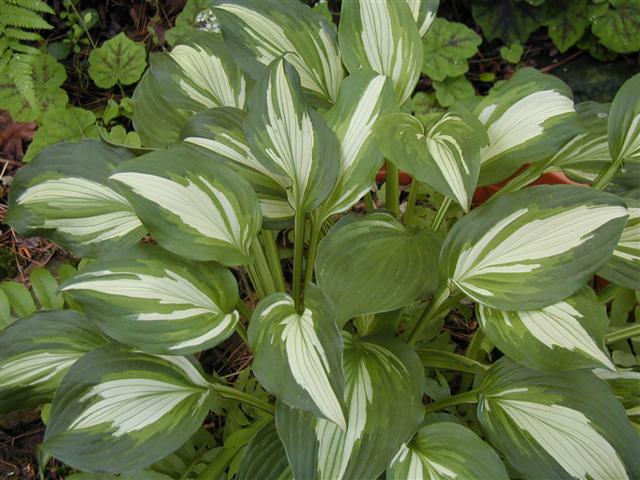
|
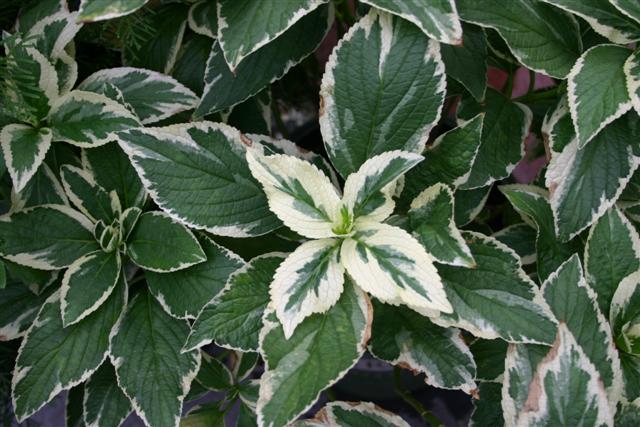
|
| Variegated Hosta | Variegated Hydrangea |
Once again, we have an unknown cultivar of a variegated hosta. However, you will note on this plant that the white
variegation runs down the center of the leaves while the green is on the edges. The variegated hydrangea (Hydrangea
macrophylla 'Variegata') is a handsome shrub with white along the leaf edges and various shades of green
towards the center.
Some Final Thoughts on Variegated Plants
As I said earlier, some variegated plants are less hardy than their green counterparts and as such may need a
bit more babying. Watch your variegated plants as some have the tendency to "revert" back to solid green by
having sporadic leaves or branches with non-variegated markings. These "rogue" leaves and branches should be
removed or they may take over and you will end up with a solid green plant.
I have also observed that plants that are variegated with cream or white can sometimes get lost or blend in the dappled and
broken sunlight under the canopy of larger trees, as shown below. Often this only occurs at certain times of the day.
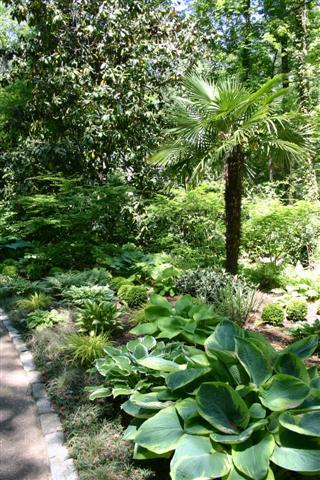
Some gardeners do not care for variegated plants. As for me, even though they may be weaker, may try to revert back to green
or temporarily get lost in weird lighting, I think variegated plants are worth the extra effort.
Copyright © 2008 by Theresa Schrum - All rights reserved
No part of this website may be reproduced without the expressed written permission of Theresa Schrum
